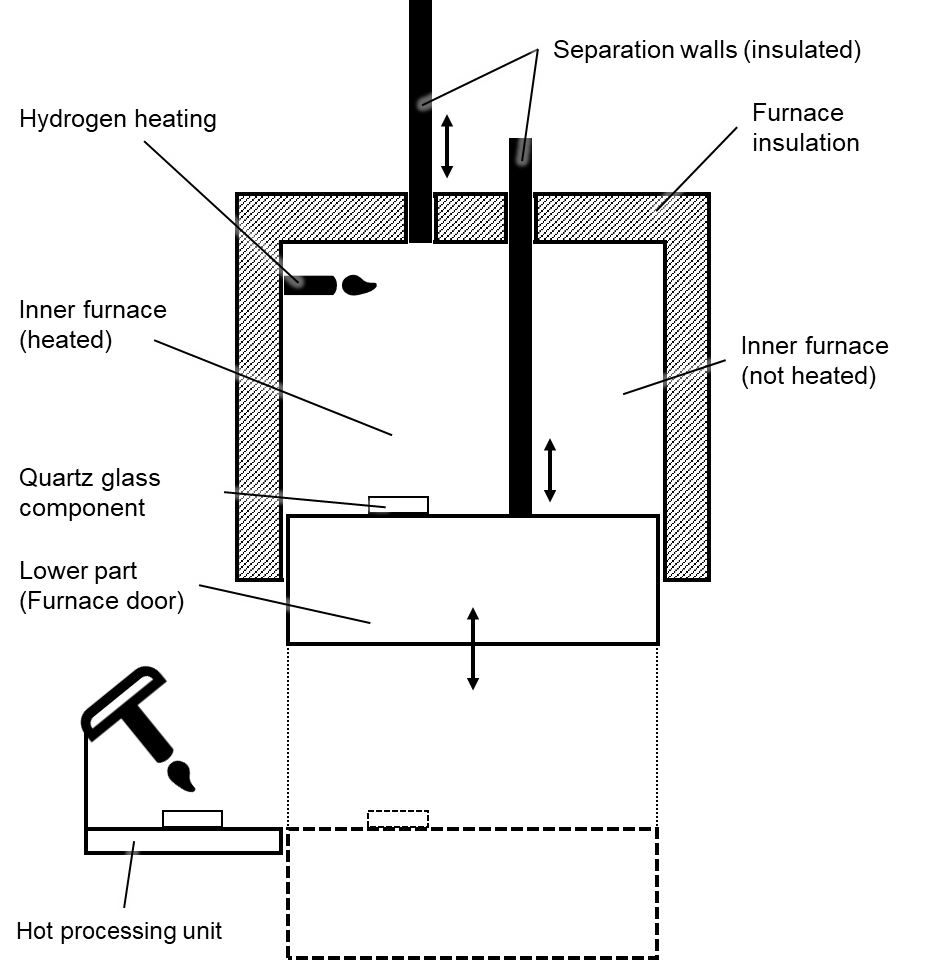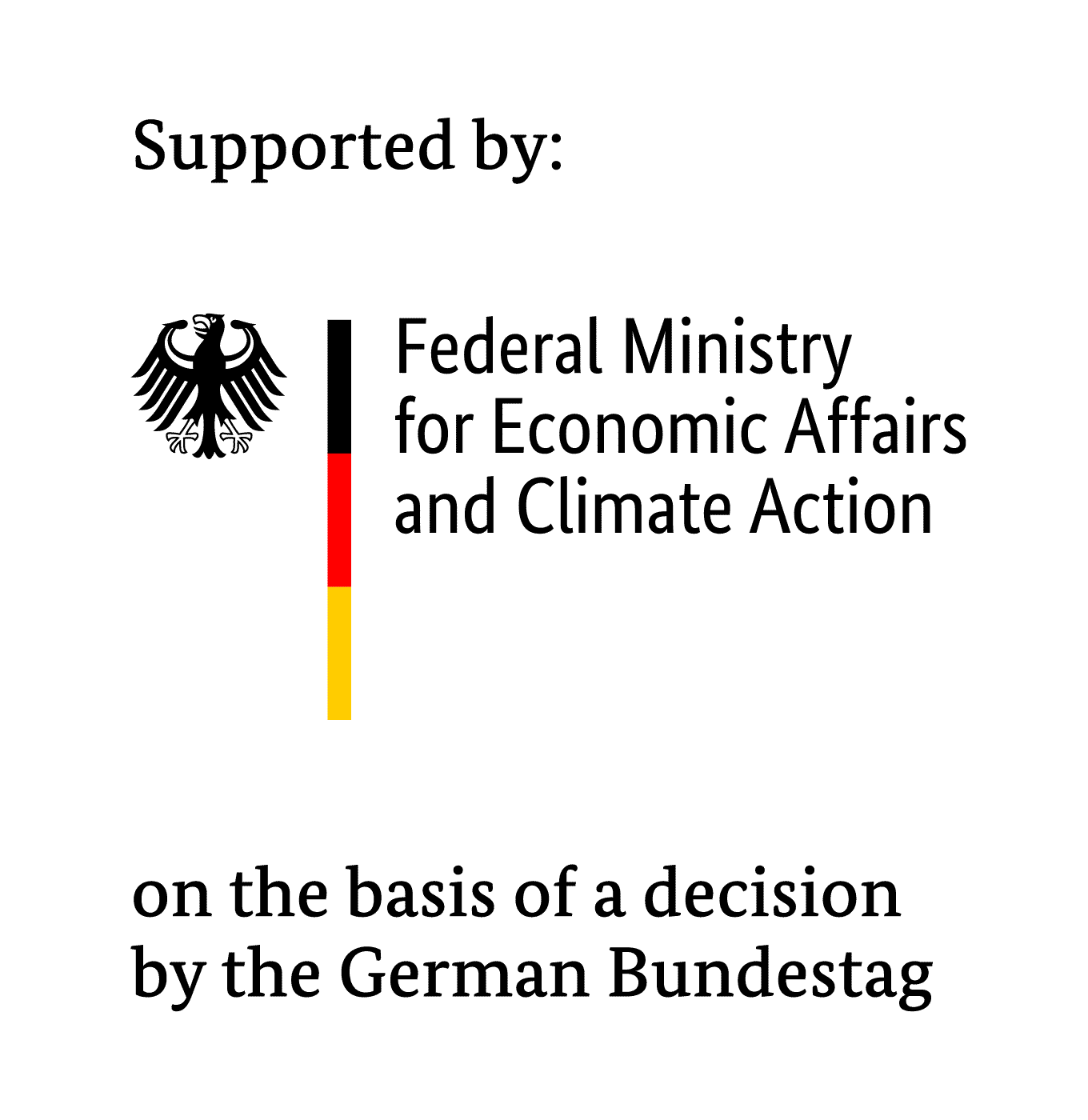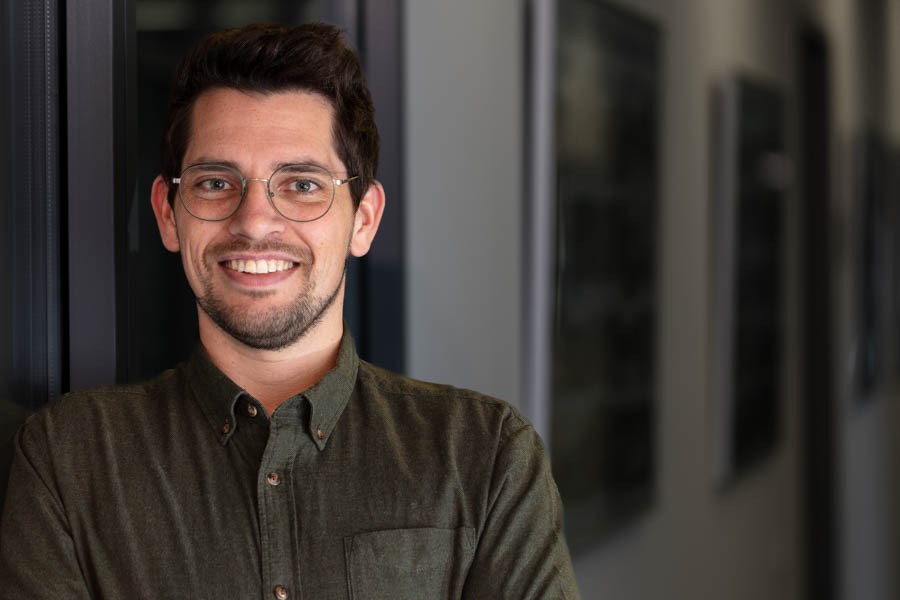Development of a flexible, hydrogen-heated annealing furnace for glass components (H2GlassTemp)
Central Innovation Programme for medium-sized enterprises (ZIM), 1 February 2022 to 31 January 2024
Project description
The aim of the research project as a cooperation project of the companies Thermo-Star GmbH, Aachener Quarzglas-Technologie Heinrich (QGH) and the Department for Industrial Furnaces and Heat Engineering of RWTH Aachen University (IOB) is the development of a novel flexible, hydrogen-heated annealing furnace for glass components and a connected hot processing unit for thick-walled quartz glass components. The innovative annealing furnace aims at a more energy-efficient heat treatment of glass components by a flexible adaptation of the inner furnace geometry.
To implement the innovative tempering furnace, a flexible, inner furnace design and a hydrogen heating technology are being developed. This essentially requires the development and design of the necessary engineering and safety technology. In particular, the high flame temperature of hydrogen during combustion with air must also be taken into account, which requires special design and/or control solutions in order to achieve a high temperature uniformity within the furnace and to avoid local overheating of the heat-treated glass components. In addition, a hot processing unit will be developed and installed in the area of the tempering furnace, with which the post-processing steps can be carried out more time-efficiently and thus more economically.
Important product examples are sample holders for the semiconductor industry. This is a product with a high reject rate that can currently only be produced in small quantities because the current processing steps involve a long waiting time. With the new process and furnace, much larger quantities can be produced because the waiting times are significantly reduced and thus more good parts can be produced in the same time. These products are needed, for example, for 5G development and in medical technology (e.g. components for artificial hearts or dialysis machines), where high material standards must be met in terms of bubbles development, surface quality and geometry.

Project goals
- Development and design of a new industrial furnace with flexible inner geometry which can be adapted to the geometry of glass components
- Heating of the furnace with hydrogen and air with burners with appropriate ignition and safety technology
- Reduction of the required energy demand
- by using hydrogen from an electrolysis plant on the factory premises
- by flexible adaptation of the inner furnace geometry
- Flexible adaptation of the process to component and inner furnace geometry
Project participants
Further information
Contact
Funding

This Project is supported by the Federal Ministry for Economic Affairs and Climate Action (BMWK) on the basis of a decision by the German Bundestag.
Funding-ID: KK5123803DB1

